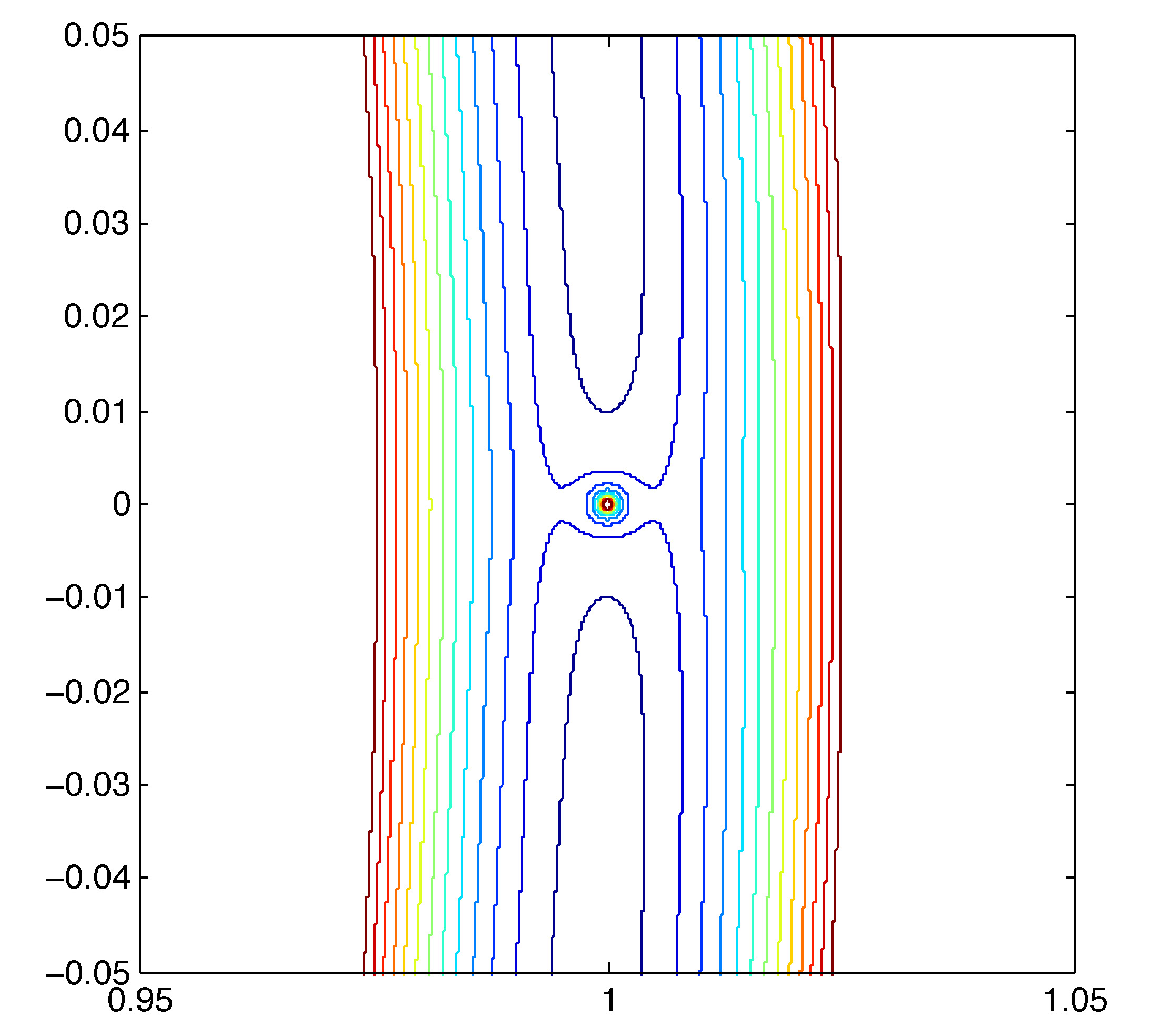Horseshoes in Space
FEB 10, 2011
Imagine you and a friend, let's called her Danica, get the opportunity to drive Porsches around a circular racetrack. You are the only two on the track. Neither of you have ever done this before and you don't want to mess up. Hence, neither of you want to pass the other. So imagine yourself in one of the cars and imagine that you are driving slightly faster than Danica. Slowly you start to creep up on her from behind. As you get close, you slow down just a little bit. Danica sees you in the rear view mirror and speeds up just a little bit. Now Danica is going slightly faster than you. After several laps, she starts to catch up on you from behind. Now you speed up a little and she slows down. This continues indefinitely (or until you run out of gas). From your perspective, Danica's path seems like a horseshoe---it spans a big arc around the track but it never intersects with where you are.There are two moons of Saturn, called Janus and Epimetheus, that exhibit exactly this sort of behavior. Saturn is at the center of the racetrack. The radii of the orbits of Janus and Epimetheus are both about 150,000 km. At any moment in time, one of the two is about 50 km closer to Saturn than the other. It's on the inside lane and is therefore going faster. But, as it starts to catch up to the other moon, it begins to feel a gravitational tug forward. Counterintuitively, that forward tug accelerates the inner body but instead of going faster and crashing into the slower moon, it gets pulled into a higher orbit and ends up going slower. Similarly, the "front" moon gets pulled into a lower orbit and goes faster. The moons never pass each other---it's a good thing because they'd hit each other rather than doing a clean flyby. Such orbits are called horseshoe orbits. There are a few other examples in our Solar System.
Last week, Lissauer et al. posted a paper in which they show that there is an exoplanetary system, called KOI-730, that consists of four planets the middle two of which are in a horseshoe orbit. One should expect that the Kepler mission will discover other horseshoe orbits in the future.
Gott and Belbruno have suggested that Earth was once in a horseshoe orbit with another planet and that over many millions of years perturbations from other sources nudged these two planets until they collided in a dramatic event the result of which was the production of our Moon.
--Bob
